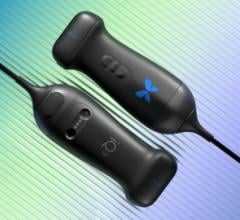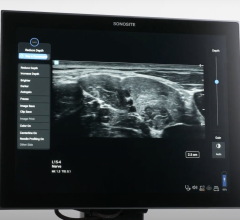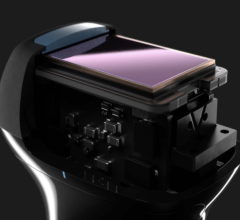The U.S. ultrasound market reached an all-time high of $1.44 billion in 2013 — a growth of almost 3 percent over 2012, according to Klein Biomedical Consultants’ “The Medical Diagnostic Ultrasound Market in the USA: Challenges & Opportunities in the New Millennium” 2013 report. Areas that contributed to market growth included musculoskeletal ultrasound and point-of-care ultrasound, which saw double-digit growth in 2013. “In spite of the uncertainties caused by the Affordable Care Act, continued declines in reimbursement and slow economic growth, we saw an uptick in ultrasound purchases,” said Harvey Klein, Ph.D., market analyst and author of the report.
And the market is not scheduled to slow down any time soon. According to the report the market is expected to grow to $1.88 billion by 2018.
New Systems
The growth of the ultrasound market can be seen in the host of systems released this year:
• In July, Esaote received U.S. Food and Drug Administration (FDA) clearance for MyLab Six, an affordable, compact ultrasound system that improves ergonomics for sonographers scanning in a seated position. It can be configured with a complete suite of applications.
• GE announced the commercial availability of its Logiq e ultrasound system in the United States. The system features a programmable probe with buttons that allow for simple, fast, precise use of portable ultrasound at the point of care. The new transducer allows for premium imaging capabilities in a compact format for patients in a wide variety of settings.
• Phillips debuted its Affiniti ultrasound system at the European Society of Cardiology (ESC) Congress 2014. The intuitive, easy-to-use system meets the needs of physicians who are challenged with treating large volumes of patients. The U.S. launch for Affiniti is slated for 2015.
• Zonare introduced its Z.One Pro ultrasound system to worldwide markets. The new system is designed to provide an economical, high-performance imaging system for a wide variety of applications.
• Samsung Electronics America announced its first premium ultrasound system, the Samsung UGEO WS80A, which received FDA clearance late last year. The system combines imaging innovations and 5-D technologies to deliver fast, easy, accurate ultrasound images for OB/GYN applications.
New Research
Ultrasound systems under development are continuing to push the limits of ultrasound use in medicine. For example, a new system developed by researchers at North Carolina State University and the University of North Carolina at Chapel Hill demonstrated the ability to identify arterial plaque that is at a high risk of rupturing and causing heart attack or stroke.
“We’ve developed a dual-frequency intravascular ultrasound transducer, which transmits and receives acoustic signals. Operating on two frequencies allows us to do everything the existing intravascular ultrasound devices can do, but also makes it much easier for us to detect the contrast agents — or microbubbles — used for molecular imaging and vasa vasorum detection,” said Xiaoning Jiang, Ph.D., an NC State University associate professor of mechanical and aerospace engineering, adjunct professor of biomedical engineering and co-author of the paper.
Researchers hope to launch preclinical studies with the device in the near future.
Developing Ultrasound Techniques
Other research is showing how ultrasound techniques could be used in areas of medicine commonly dominated by other imaging modalities. The study, “Detection and Impact of Subclinical Coronary and Carotid Atherosclerosis on Cardiovascular Risk Prediction and Reclassification in Asymptomatic U.S. Adults: Insights from the High Risk Plaque Bioimage Study,” presented at the American College of Cardiology (ACC) 2014 meeting, demonstrated how a new ultrasonic scanning technique for the carotid arteries revealed who is at high risk of being hit by a blood clot.
“By scanning both carotid arteries and calculating a measure of how much atherosclerosis was present, we could show that those who had much atherosclerosis were three times as likely to develop coronary heart disease in the form of thrombosis, need for heart surgery, etc., as those who had veins without evidence of atherosclerosis,” said Henrik Sillesen, M.D., department of vascular surgery, University Hospital Copenhagen, Denmark.
According to the research, ultrasound proved to be just as good as a cardiac computed tomography (CT) scan, which has been considered the best method.
Robotic-assisted Ultrasound
As the market and demand for ultrasound grows, vendors are finding ways to ensure the systems are efficient in day-to-day practice. One advancement that could be coming to many physician offices in the near future is robotic-assisted ultrasound. Two Mount Sinai research studies published in the August issue of the Journal of the American College of Cardiology (ACC): Cardiovascular Imaging showed the potential of telerobotic medicine. One study used a computer to perform a robot-assisted trans-Atlantic ultrasound examination on a person in Boston, and the other showed that video e-consultation, coupled with remote robot-assisted echocardiogram, dramatically reduces the waiting time for a diagnosis faced by heart failure patients in rural communities.
“The two studies give us a glimpse of what to expect in the near future, a patient-friendly imaging technology at your doorstep,” said Jagat Narula, M.D., Ph.D., senior author of both research studies who serves as director of the Cardiovascular Imaging Center and associate dean of Global Research at Icahn School of Medicine at Mount Sinai.
The researchers said that in the future, on-demand virtual robotic ultrasound could be used in a wide variety of clinical setting collaborations, including in-hospital or emergency room patient imaging studies, community screenings or even within war zones.


 April 08, 2024
April 08, 2024 








